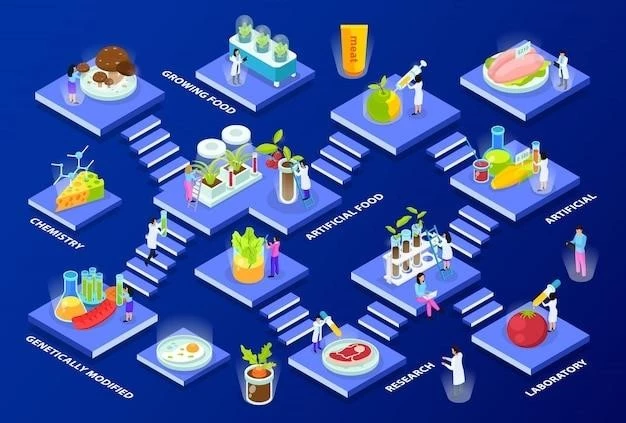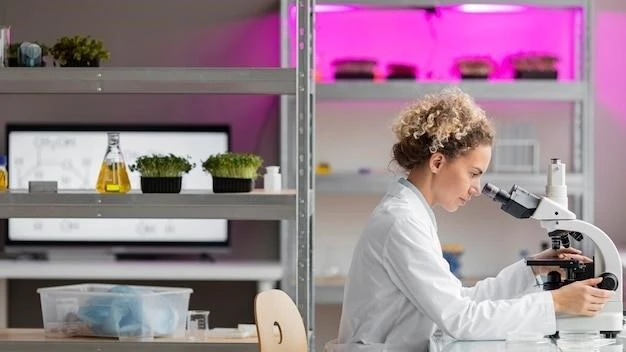As of today, June 10th, 2024, the global food system faces unprecedented challenges. With a projected population of 9.7 billion by 2050, the need to produce nutritious and sustainable food for all is paramount. Coupled with the growing threat of climate change and resource scarcity, food science is at a pivotal turning point. This article delves into the exciting and rapidly evolving landscape of food science, exploring the key trends and technologies that will shape the future of our plates and the planet.

1. Sustainable Food Production: A Paradigm Shift
The future of food hinges on our ability to produce it sustainably. Traditional agriculture, often resource-intensive and environmentally taxing, is giving way to innovative approaches:
- Precision Agriculture and Smart Farming: Leveraging sensors, data analytics, and artificial intelligence (AI) to optimize resource use, minimize waste, and maximize yields.
- Vertical Farming and Controlled Environment Agriculture: Growing crops in vertically stacked layers or controlled indoor environments to reduce land use, conserve water, and enhance productivity.
- Cellular Agriculture and Cultured Meat: Producing meat, poultry, and seafood directly from animal cells, bypassing traditional animal agriculture and its associated environmental impacts.
2. Food Security: Nourishing a Growing World
Ensuring food security for all necessitates a multi-pronged approach:
- Reducing Food Loss and Waste: Implementing technologies and practices across the food supply chain to minimize losses from farm to fork.
- Improving Food Storage and Distribution: Investing in infrastructure and technologies that extend the shelf life of food and facilitate its efficient distribution, particularly in developing countries.
- Developing Climate-Resilient Crops: Breeding and engineering crops that can withstand extreme weather events, pests, and diseases, safeguarding yields in the face of climate change.
3. The Rise of Alternative Proteins
As the environmental and ethical concerns surrounding conventional animal agriculture grow, alternative protein sources are gaining traction:
- Plant-Based Proteins: Utilizing innovative technologies to transform plant-based ingredients like soy, peas, and lentils into delicious and nutritious meat and dairy alternatives.
- Insect Protein: Recognizing insects as a sustainable and nutrient-rich protein source, with potential for both human consumption and animal feed.
- Mycoprotein: Exploring the potential of fungi-derived protein as a sustainable and versatile food ingredient.
4. Food Processing and Technology: Innovations for the Future
Advancements in food processing and technology are revolutionizing the way we produce, preserve, and consume food:
- High-Pressure Processing (HPP): Utilizing high pressure to eliminate harmful bacteria and extend shelf life without compromising flavor or nutritional value;
- Pulsed Electric Field (PEF) Technology: Employing short pulses of electricity to inactivate microorganisms and improve the efficiency of food processing.
- 3D Food Printing: Creating customized food products with specific textures, shapes, and nutritional profiles, opening new possibilities for personalized nutrition and culinary creativity.
5. The Power of Biotechnology
Biotechnology plays a crucial role in enhancing food production and sustainability:
- Gene Editing: Using CRISPR-Cas9 and other gene-editing technologies to develop crops with improved yields٫ disease resistance٫ and nutritional content.
- Microbiome Engineering: Harnessing the power of the microbial communities in soil and plants to enhance nutrient uptake, promote plant growth, and protect against pests and diseases.
- Precision Fermentation: Utilizing microorganisms to produce specific food ingredients, such as enzymes, flavors, and proteins, in a more sustainable and efficient manner.

6. The Evolving Landscape of Food Consumption
Consumer preferences are shifting towards healthier, more sustainable, and ethically produced food:
- Personalized Nutrition: Utilizing genetic testing and data analysis to create tailored dietary recommendations, optimizing individual health and well-being.
- Transparency and Traceability: Demanding greater transparency throughout the food supply chain, from farm to fork, using blockchain and other technologies to track food origins and production practices.
- Circular Food Systems: Moving towards a more circular economy for food, reducing waste and maximizing resource utilization through innovative recycling and upcycling initiatives.
7. The Role of Data and Artificial Intelligence
Data analytics and AI are transforming every aspect of the food system:
- Optimizing Agricultural Practices: Using sensors and AI-powered algorithms to monitor crop health, predict yields, and optimize irrigation and fertilization.
- Enhancing Food Safety and Quality Control: Implementing AI-powered systems to detect contaminants, monitor food quality, and prevent foodborne illnesses.
- Personalizing Food Choices: Developing AI-powered apps and platforms that provide personalized dietary recommendations and meal planning based on individual preferences, health goals, and dietary restrictions.
Conclusion: A Future of Abundance and Sustainability
The future of food science is brimming with possibilities. By embracing these advancements and fostering collaboration across disciplines, we can create a food system that nourishes our growing population while safeguarding the health of our planet. This future is not merely a utopian vision but a necessity, driven by the urgent need to address climate change, resource scarcity, and global food security. As we stand at the cusp of this transformation, the choices we make today will determine the food landscape of tomorrow.










